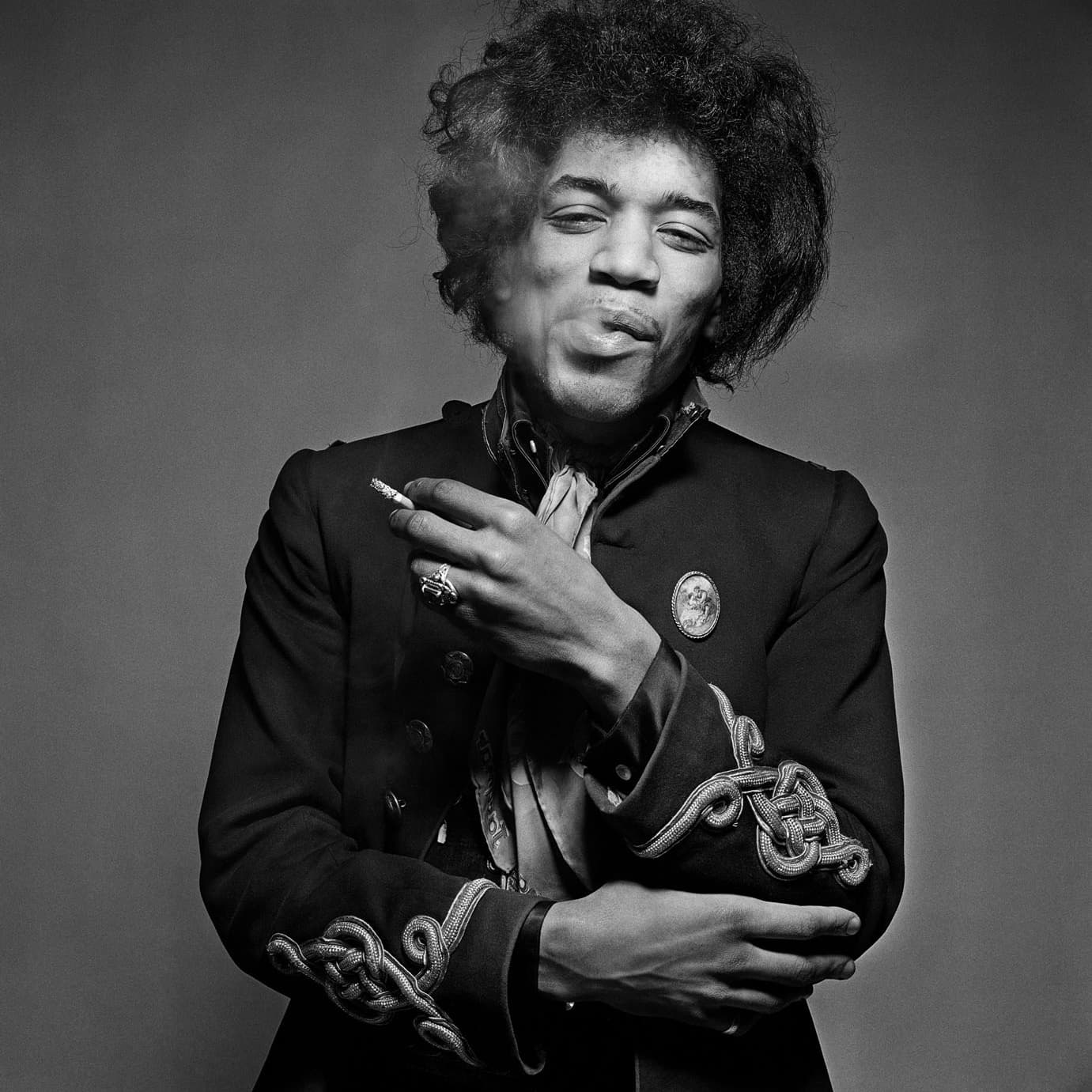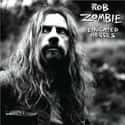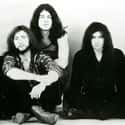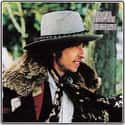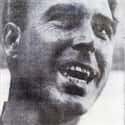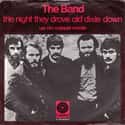-
(#1) Buffalo Soldier
- Bob Marley & The Wailers
What It’s About: "Buffalo Soldier" tells the story of African-American cavalry and infantrymen who fought for the United States during the late 19th century. Largely tasked with securing the expanding American West, Buffalo Soldiers fought against Native Americans during the American-Indian Wars until the 1890s and in the Caribbean as part of the Spanish-American War in 1898.
What It Gets Right: Bob Marley and the Wailers correctly describe the Buffalo Soldiers as "taken from Africa, brought to America," with many of the men having formerly been slaves.
Where It Falls Short: "Buffalo Soldier" accurately depicts the circumstances and activities of its namesake group. Just as the song indicates, Buffalo Soldiers did fight in conflicts like the Battle of San Juan Hill. The poignant lyrics point out how Buffalo Soldiers went from "Fighting on arrival, fighting for survival" in servitude only to take up arms "in the war for America."
-
(#2) American Witch
- Rob Zombie
What It’s About: Aptly named, "American Witch" tells the story of the Salem witch trials. The trials began in 1692 and lasted until the following year, with roughly 200 individuals accused of witchcraft during the proceedings.
What It Gets Right: The lyrics of Rob Zombie's "American Witch" incorporate details derived from firsthand accounts of events leading up to the trials. Bridget Bishop, one of the 20 individuals executed during the trials, was associated with a mysterious, evil creature - "the body of it looked like a monkey, only the feet were like a cock's feet with claws" - imagery echoed in the first verse of the song.
Throughout the song, Zombie cries out about “20 innocents” for whom "we pray for... bow down [to]... hang high... [and] accused," a proper reference to the 20 people who perished during the trials.
Where It Falls Short: All facts are apparently accurate, complete with a description of the accused witches' final moments, standing "Alone on the hill and ready to die." The hill in question is Gallows Hill, the site where Bishop and 18 additional convicted witches were hanged.
-
(#3) The Longest Day
- Iron Maiden
What It’s About: In a song about the D-Day invasion on June 6, 1944, "The Longest Day" presents a visceral, haunting, and graphic account of events.
What It Gets Right: "The Longest Day" includes some interesting wordplay, referencing "Overlord, your master, not your God." Operation Overlord was the codename for the Allied D-Day offensive. Details from the lyrics line up with firsthand accounts of the battle, as well, with “Oh the water is red" attesting to memories of "The sea around... red with blood."
Where It Falls Short: All facts of "The Longest Day" are accurate, with men turned "paper soldiers to bodies on the beach" amid blood, sand, and bullets. Roughly 4,000 Allied troops perished on D-Day, individuals who, according to the song, met the "ghostly hand" of a Valkyrie on their way to Valhalla.
-
(#4) April 29, 1992
- Sublime
What It’s About: Written in response to the 1992 Los Angeles riots, "April 29, 1992 (Miami)" tells the story of the chaos, violence, and anger that gripped the city in the aftermath of the Rodney King beating.
After engaging in a high-speed chase with police in Los Angeles, King was dragged out of his car and accosted by four police officers in 1991. The incident was caught on video and contributed to charges being brought against the officers - Laurence Powell, Timothy Wind, Theodore Briseno, and Stacey Koon - involved. All four were acquitted on April 29, 1992, however, sparking outrage and triggering the riots.
What It Gets Right: Sublime captured the intensity and extent of the riots, even using samples of real LAPD radio chatter in "April 29, 1992 (Miami)." Written from the perspective of a rioter in Anaheim, California - the song even includes the address of a convenience store that was looted in the city - the lyrics reference other cities where violence broke out, including locations in Florida, Texas, and Nevada.
Where It Falls Short: While the title of the song gets the date the riots broke out right, the lyrics themselves contain a mistake. In the first verse, the date mentioned is April 26, 1992.
-
(#5) Smoke on the Water
- Deep Purple, Flashback!, Joe Satriani
What It’s About: The fire that broke out at the Montreux Casino in Switzerland on December 4, 1971, resulted from an incident during a Deep Purple concert. As Deep Purple played their song "King Kong," a concert-goer purportedly fired a flare gun, setting a nearby wooden roof on fire. The fire was devastating for the casino, although there were only minor injuries reported.
What It Gets Right: As witnesses to the entire event, Deep Purple got the details right when they wrote "Smoke on the Water." The casino, called the "gambling house," did burn down as "Funky Claude was running in and out pulling kids out the ground." The Claude in question was Claude Nobs, co-founder of the Montreux Jazz Festival, who helped rescue some people in the fire. As the band looked out across Lake Geneva, they very literally saw smoke on the water.
Where It Falls Short: Widely believed to have been started by a flare gun - a fact included in the song - there was some dispute over the cause of the fire. Concert-goer Peter Schneider asserts that the fire actually started by a "boy throwing lighted matches in the air, and one of them got stuck on the very low ceiling... So the fire started right above where the boy was sitting on the low-lying ceiling beams."
-
(#6) Hurricane
- Bob Dylan
What It’s About: Released in 1975, Bob Dylan's "Hurricane" recounts the unjust prosecution and incarceration of Rubin "Hurricane" Carter. Carter, a boxer from New Jersey, was convicted (twice) of triple homicide in 1967, ultimately spending 19 years in jail for crimes he didn't commit. While Carter wasn't released from prison until 1985, his case received widespread attention during the 1970s.
What It Gets Right: Dylan had Carter's autobiography in hand when he wrote "Hurricane," a resource that allowed him to draw upon the titular figure's view of events. The names in the song refer to real players like Alfred Bellow and Arthur Dexter Bradley - two career criminals who claimed to have seen Carter at the scene of the crime. All the names are real, which was controversial, with bartender Patty Valentine suing the singer for defamation of character.
"Hurricane" includes lyrics that reflect the social context within which Carter was accused and convicted, an issue that remains at the forefront of conversation in 2020: "If you're Black you might as well not show up on the street/Less you wanna draw the heat."
Carter and his fellow defendant, John Artis, were initially detained simply because they were in a car that resembled the one involved in the shooting. Even after a witness failed to identify them as the offenders, they remained under suspicion.
Where It Falls Short: Dylan calls Carter a “Number one contender for the middleweight crown," a designation that remains somewhat unclear. While he did fight for the middleweight championship against Joey Giardello in 1964, Carter won four fights in 1966 and was ranked fourth in the world.
-
(#7) The Battle of New Orleans
- Johnny Cash
What It’s About: The Battle of New Orleans was fought in January 1815 - two weeks after the War of 1812 had officially come to an end. Johnny Horton's "The Battle of New Orleans" tells the story of the conflict, a decisive a battle that resulted in outmatched US soldiers soundly defeating their British counterparts.
What It Gets Right: The ragtag group of American forces at New Orleans in 1814 were equipped with whatever weapons they could find, including the "squirrel guns" referenced by Horton. As British troops approached, soldiers led by future president Andrew Jackson "stood beside our cotton bales," an accurate description of the fortifications built around New Orleans.
Where It Falls Short: At the time of the Battle of New Orleans, Andrew Jackson was a major general, not “Colonel Jackson," as indicated in the song. Jackson was a major general in the Tennessee militia as early as 1802, and received a commission as major general in the US Army until 1814, largely due to his successes during the War of 1812.
-
(#8) Enola Gay
- Orchestral Manoeuvres in the Dark
What It’s About: Orchestral Manoeuvres in the Dark, better known as OMD, released "Enola Gay" to tell the story of the plane that dropped of the atomic bomb on Hiroshima in August 1945.
What It Gets Right: "Enola Gay" integrates numerous details about its namesake plane, asking, "Is mother proud of little boy today?” in reference to the fact that the aircraft was named after pilot Paul Tibbets's mother. Song lyrics also correctly identify the bomb - codenamed “Little Boy” - and even get the time the bomb was dropped right:
It's 8:15, and that's the time that it's always been. We got your message on the radio, conditions normal and you're coming home.
Where It Falls Short: Andy McCluskey and Paul Humphreys, members of OMD, did a lot of research when they wrote "Enola Gay" and it shows. The song is accurate, layered with meaning and historical truths, intentionally "an exploration of the moral dilemma" of dropping the bomb while reflecting the authors' "ambivalence to the morality of doing such a thing."
-
(#9) The Night They Drove Old Dixie Down
- The Band
What It’s About: Written from the viewpoint of Confederate soldier Virgil Caine, "The Night They Drove Old Dixie Down" describes the final days of the Civil War. Listeners hear about the struggles of early 1865 leading up to the fall of Richmond, Virginia, in spring of that year.
What It Gets Right: "The Night They Drove Old Dixie Down" places Caine along the "Danville Train," a fundamental supply line to the Confederacy during the Civil War until Union General George Stoneman and his cavalry raided and destroyed large sections of its tracks.
Where It Falls Short: Even though the song's narrator, Caine, returns home to Tennessee after the war, the line “Back with my wife in Tennessee... There goes Robert E. Lee," offers no historical truth. Lee moved to Virginia with his family and took a job as president of Washington College, with no indication that he ever visited Tennessee.
-
(#10) All and Everyone
- PJ Harvey
What It’s About: "All and Everyone" recounts the disastrous events of the Gallipoli Campaign of 1915 and 1916. As Allied Forces attempted to eliminate the Ottomans from WWI, they launched a joint naval and land offensive on the Dardanelles.
What It Gets Right: PJ Harvey's presentation of Gallipoli mentions the “400 acres of useless beachfront” where thousands of soldiers fell during the campaign. The lyrics continue, "A bank of red earth, dripping down, death is now and now and now," reflecting the high number of casualties suffered on both sides, with as many as 65,000 lives lost.
"Death was everywhere in the air and in the sounds coming off the mounds of Bolton’s Ridge” - a real site where Australian and New Zealand forces managed to capture high ground from the Ottoman grasp.
Where It Falls Short: PJ Harvey was struck by what she called "the dreadful mismanagement and the shocking waste, needless waste," of Gallipoli, a conflict she researched for the album. As a result, the song is accurate and heavily influenced by "firsthand accounts" from soldiers and civilians alike.
-
(#11) Rasputin
- Boney M.
What It’s About: "Rasputin" articulates the events of the titular character's rise to prominence in 19th-century Russia. Grigori Yefimovich Rasputin was a mystic who was pulled into the circle of Tsar Nicholas II of Russia to serve as an advisor, in large part due to his purported supernatural abilities.
What It Gets Right: As the 1979 hit by Boney M. indicates, Rasputin did preach, teach, and evoke terror. He ingratiated himself with Tsar Nicholas and his wife, Tsarina Alexandra, especially as the latter tried to heal her son from hemophilia. Alexandra, correctly noted by Boney M., "heard he was a holy healer who could heal her son."
Rasputin did enjoy his alcohol, as pointed out by Boney M., and his influence upon the royals drew the ire of the Russian aristocracy. On December 29, 1916, Rasputin was served poisoned wine and fed cyanide-laced desserts. Neither ended Rasputin's life and, as the song indicates, he felt fine. As a result, his assassins then shot him - also in the song - and then threw his body into the Neva River.
Where It Falls Short: Boney M.'s song draws heavily on the rumors of a romantic relationship between Rasputin and the tsarina. Widespread suspicion of the "Mad Monk" did lead to assertions that the two were romantically involved, but there was never any evidence of an affair.
-
(#12) Pride (In the Name of Love)
- John Legend
What It’s About: Containing information about the life of Martin Luther King Jr., "Pride (In the Name of Love) began as a criticism of President Ronald Reagan. The 1984 hit for U2 became an anthem of sorts, seen by many as a tribute to the slain civil rights leader.
What It Gets Right: The third verse of "Pride" describes the shooting of King, naming the date and place of his assassination: "Early morning/April 4/Shot rings out in the Memphis sky."
When it comes to the larger civil rights movement and "Pride," the line, "One man come he to justify/One man to overthrow," refers to King and fellow activist Malcolm X, highlighting differences in their approaches - the former as peaceful, while the latter was more militant.
Where It Falls Short: The same line that includes factual information about the assassination of Martin Luther King Jr. on April 4, 1968, in Memphis, Tennessee, also gets an important detail wrong. King was shot just after 6 o'clock in the evening, not “early morning."
-
(#13) Cortez the Killer
- Neil Young, Neil Young & Crazy Horse
What It’s About: "Cortez the Killer," Neil Young's hit from 1975, tells the story of Spanish conquistador Hernan Cortez (Cortes) arriving and conquering the Aztecs during the 16th century.
What It Gets Right: When Young sings, “He came dancing across the water," he's referencing the Aztec belief that Cortez was a god. By some accounts, Cortez arrived at the same time that an Aztec god of creation, Quetzalcoatl, was expected to return to Earth. Young also rightly identifies galleons and guns, the key technologies at Cortez's disposal, and names the leader of the Aztec, Montezuma, early in the song.
Where It Falls Short: According to Young, "War was never known" among the Aztec. In truth, the Aztec empire was built through a series of conflicts within modern-day Mexico, one that resulted in a loose confederation of groups in the region. The Aztec had a strong military and were familiar with bloodshed - and were not the peaceful peoples described in the song.
New Random Displays Display All By Ranking
About This Tool
Music often reflects real life, and the source of art is life. The music artist is good at expressing their personal opinions in songs and discussing the details of the events section by section. There’s something particularly satisfying about a song that tells a story. A number of songs are about real people and cataclysmic moments in history. Music is closely related to many important moments.
Do you know any songs related to history? The random tool has generated 13 items, including some songs about historical events that are surprisingly accurate. Welcome to check this interesting collection of songs and leave a message.
Our data comes from Ranker, If you want to participate in the ranking of items displayed on this page, please click here.







